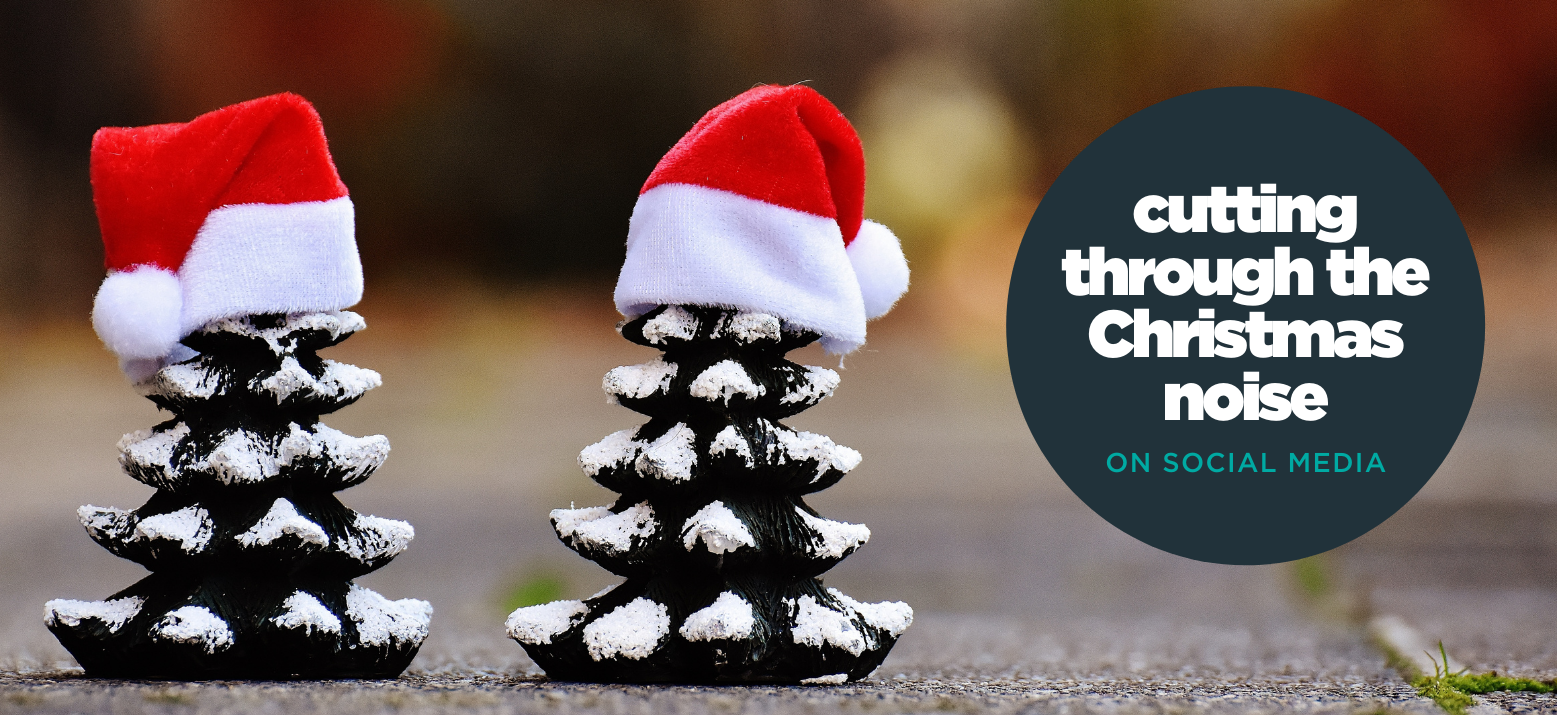Whatever your business does or sells, the period leading up to Christmas and the end of year is often one of the most crucial periods, but because it’s the same for everyone, the amount of festive-related social media content can be overwhelming for consumers and can result in some level of seasonal fatigue. How can you stand out and make yourself heard by your target audience? How can you make the most of this period for your business through social platforms?
Assuming that you don’t have a ‘John Lewis Christmas advert’ kind of budget for your social media content, we’ve compiled some tips to help you get the best possible results and return from your December promotion ideas and social activity.
Step One: Decide what you want the outcome of your Christmas social activity to be
Before you get carried away thinking about the creative and key messages (even though it’s so tempting to jump right in), it’s essential to pin down exactly why you’re doing Christmas social activity in the first place. Do you:
- Want to sell products, perhaps to clear some stock before the end of the year?
- Want to increase social engagement with your customers/target audience?
- Want to build your mailing list?
- Want to increase brand awareness?
- Want to spread some festive cheer?
You might want to do all of these things, but it’s important to settle on a primary purpose for your activity, even if there might be secondary goals too, as this will help keep things focused. You can also more easily tie your social in with other channels during this period, such as SEO and content marketing.
Step Two: Decide what story you want to tell and how it will meet your objectives/desired outcome
Pretty much every successful festive marketing campaign in recent years (yes, TV ads, but also purely digital content) tells a story that the audience can connect on an emotional level with. If the story is compelling enough, it is definitely possible to make a splash on social media.
Taking the example of food retailer Iceland’s Christmas advert from 2018. It was banned from being played on TV by the regulator as it was deemed too political in nature, so they took it to online-only channels and the video racked up over 60 million views in the first week after the ban. Iceland played on the fact that it had been banned (as you can see by the video title below), and the more cynical of us might think that it was always their intention – with surely big savings made on switching from TV advertising to mainly social media – but, either way, it shows that you don’t have to be seen on TV to make a splash at Christmas if you have a story that people are interested in.
Did this campaign achieve their objectives? Well, only Iceland themselves know what these were, but a blog post published at the time shows that it certainly didn’t hurt them as a business, and their published results covering that period indicate that they gained an additional 80,000 customers during Christmas 2018, which they will most likely attribute, at least in part, to this campaign.
For your business, your social media ideas for Christmas might be on a much smaller scale, but that doesn’t mean that you can’t tell a story that means something to your audience in order to help achieve your business objectives. The key to standing out is making sure it’s a fresh idea that ties in with what you do or sell (to some degree) and promotes positive emotions in your audience. It also needs to compel people to take an action. So that sounds easy enough, right?
Especially in the context of 2020’s damp squib of a pandemic Christmas for so many and early signs that so many people and businesses are going all-out this time around, the idea of festive cheer potentially running out before we even get to 25th December is one to consider. Can you take a different approach with your campaign to the usual sparkle and schmaltz but still get the Christmas vibes across?
Consider whether a partnership with a relevant charity or community project could be a good fit for your campaign, or whether it should contain elements of your CSR strategy – this can help to give more meaning to your activity as well as adding gravitas to the campaign and ensuring that a worthy cause benefits from your business success too.
Step 3: Clearly define your messaging and creative
Most festive social media content is designed to inspire positive feelings in your audience, whether that’s nostalgia, a sense of belonging, empowerment or simply spreading some joy. The way you portray this through your creative and messaging is really key to whether your audience will see it as authentic or not.
Some brands choose to go for the shock factor, such as budget brand Poundland’s controversial saucy elves that starred in some questionable images in 2017 and found themselves banned by the ASA the following year. It’s not clear whether all of this publicity resulted in bigger profits for Poundland or not, but it certainly got people talking about them, even if sentiment was most definitely divided.
What a storm in a teacup. See you again at Tw-elf o’clock. pic.twitter.com/HkpJKAnxFT
— Poundland (@Poundland) December 22, 2017
Your creative and messaging choices need to align with your campaign objectives in order to be effective, but being functional doesn’t mean they have to be dull.
We all know about John Lewis’ TV ads, but last year they also ran a lovely social media campaign where people could nominate loved ones and the brand sent goodies out to some of them.
They used products that they sell in many of the campaign images and most posts had a link to the shop, as well as generating huge levels of engagement. More sales-driven posts were interspersed with their #GiveALittleLove posts using similar creative so none of them looked out of place.
Step 4: Promote social content strategically
Unless your primary objective with your Christmas content is to increase brand awareness, it can really pay off to be quite selective with your paid social strategy. Rather than keeping the targeting loose and boosting everything you post organically to get your content in front of as many people as possible, ensuring that you focus most on an audience that is more likely to take action after viewing will usually deliver a much better ROI.
- This could involve a remarketing strategy to show your promoted content to those who have visited your site or clicked on your ads before but not converted, as this shows a level of intent.
- You can also target followers of your close competitors on some platforms, such as Facebook (where some brand pages will show up as ‘interests’ that you can find relevant audience insights from.
- You can use lookalike audiences on some platforms that are based on users who act in the same way as your existing customers, rather than based on more generic info like demographics, to get your content in front of more relevant people.
- Manual targeting, by going through various filters and categories on the social platform’s ad interface, can be more time consuming but does help to ensure you’re only showing your content to the most relevant audience, so the time spent here can mean a better return on ad spend.
The most important thing with ads is to test different options, monitor performance and tweak as needed. The balance needs to be found between giving ads time to settle in and gather enough data to optimise their own performance (as most of the platforms now can do automatically) and making a decision to manually change some of the campaign parameters, targeting or creative.
Creating social media content that cuts through the Christmas noise is a real challenge for any type of business, but it isn’t impossible. Developing a fresh, engaging and authentic story, getting your creative right and putting it in front of the people most likely to act as a result are the keys to meeting your campaign objectives and seeing the best possible return on your investment.
If you want some help with your social media marketing, get in touch with our team to find out more.







